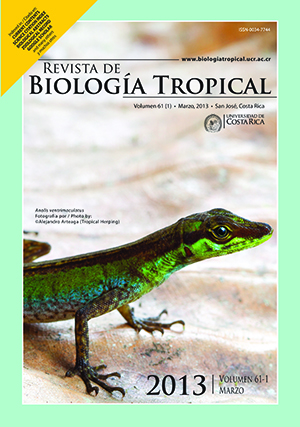Abstract
In small-scale human settlements, the acquisition of animal protein is strictly related to subsistence activities, and yours dietary habits are determined by the availability and the selectivity permitted by the diversity of these resources. This study analyzed the consumption of animal protein sources in seven traditional riverine communities of the Tapajos National Forest, located in Eastern Brazilian Amazonia, considering fish, game meat and domestic animals. The analysis of animal protein consumption was based on the assumptions of the diet breadth model and the Optimal Foraging Theory. We compared diet breadths between communities and between rainy and dry seasons. The study focused on seven traditional riverside communities, six of them distributed along the right bank of the Tapajos River and one on the right bank of the Cupari River. Data collection was performed in four fields trips, two in the rainy season (May and July) and two in the dry season (September and November) in 2010. Data were collected through semi-structured interviews where the informant mentioned the source of animal protein consumed in the last three meals and which would be consumed at the next meal, if possible. We carried out a total of 470 interviews, where we documented 1 512 meals, and in only 12% of the meals there was no consumption of any animal protein source. The fish was consumed in 60.4% of the meals, being the most important source of animal protein consumed, differing significantly from other protein sources (χ²=23.79, df=5, p<0.001). A total of 11 species of wild animals and 46 species of fish were consumed. The choice in the consumption of game meat consisted on Tayassu pecari, Hydrochoerus hidrochaeris and Cuniculus paca, while the preference for fish consumption included Plagioscion spp., Astronotus spp., Cichla spp. and Leporinus spp.. The Simpson index did not vary significantly between the rainy and dry season (N=6, t=1.25, p=0.267) or between communities (N=6, t=5, p=0.42), although São Francisco das Chagas have significantly higher consumption of game meat (χ²=370.41, df=25, p<0.001). Fishing is an activity of paramount importance to these communities, and factors that lead to decreased availability of fish may lead to subsequent increase in hunting pressure. For the conservation of preserve of both wildlife natural resources and practices of subsistence of riverine communities of the Tapajós National Forest, it is necessary to ensure the maintenance of fish stocks and the protection of the Tapajós River areas large enough to maintain viable populations of wild animals and more tolerant to hunting and habitat loss.##plugins.facebook.comentarios##
Downloads
Download data is not yet available.






